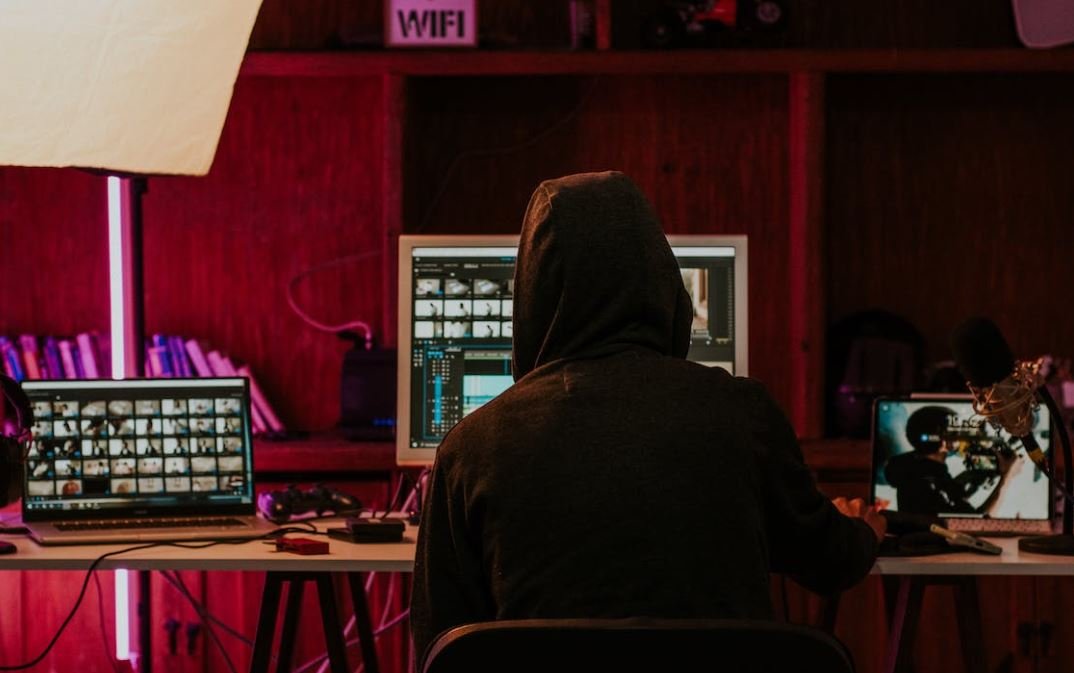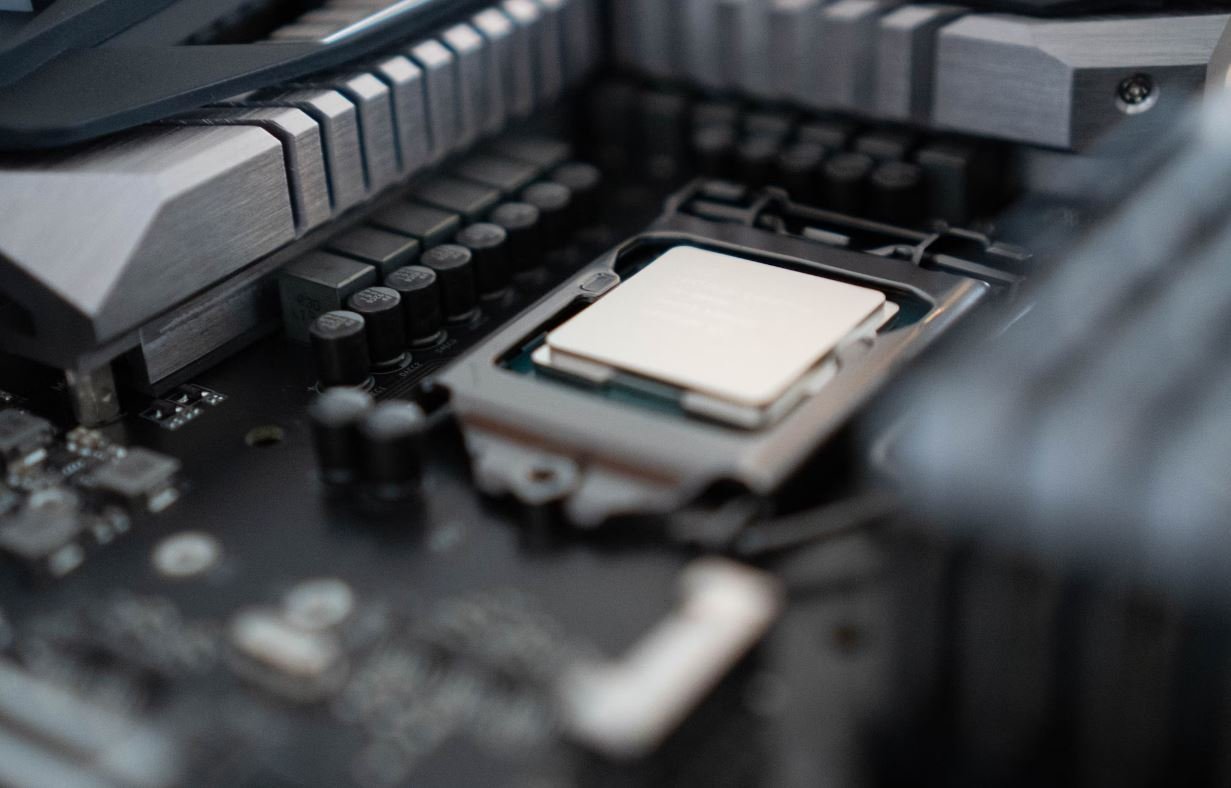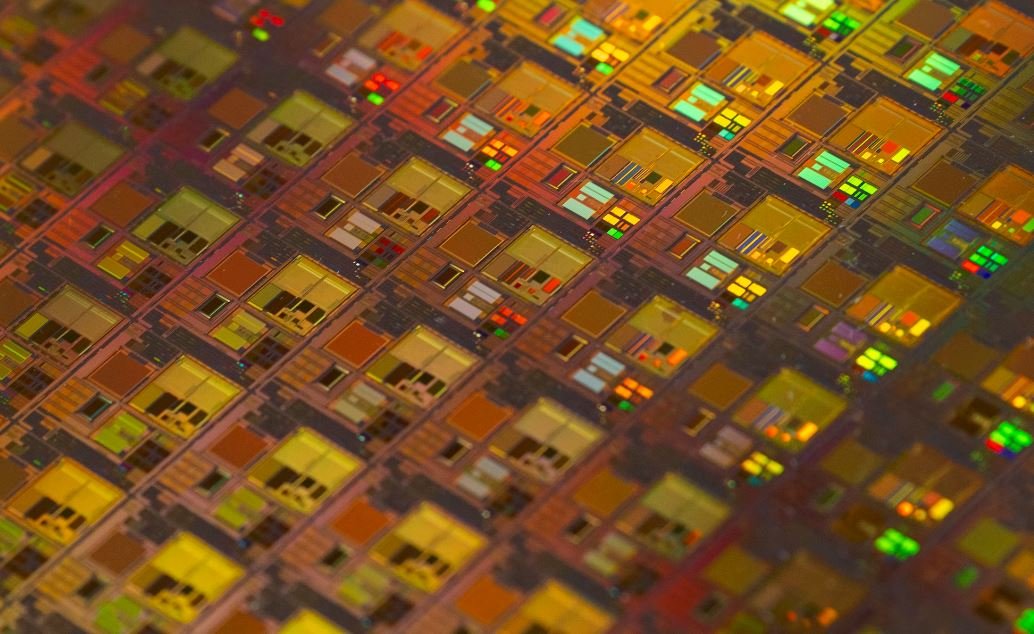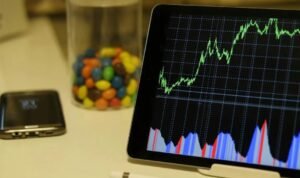How to Make Generative Art NFT
Generative art is a unique form of digital art that is created using algorithms and computer programs to generate or evolve images, animations, and even music. With the rise of non-fungible tokens (NFTs), artists are now exploring the potential of generating and selling their own generative art as digital assets. In this article, we will explore the process of creating generative art NFTs and the steps involved in bringing them to the market.
Key Takeaways:
- Create generative artwork by utilizing algorithms and computer programs.
- Transform your generative art into non-fungible tokens (NFTs) to sell as digital assets.
- Choose the right blockchain platform for minting and selling your generative art NFTs.
- Market your generative art NFTs effectively to attract buyers.
- Consider collaborations and partnerships to expand your reach in the generative art NFT community.
**Generative art** is generated using code, algorithms, or mathematical patterns, allowing for endless possibilities and variations.
When creating generative art NFTs, **establish a concept or theme** that will guide your algorithm and define the parameters for generating the artwork.
Generative art algorithms can be created using various programming languages such as **Python, JavaScript, and Processing**.
- Start by **defining the rules** and parameters for your generative art algorithm.
- Experiment and iterate on your code to **fine-tune the desired aesthetic** and output of your generative art NFT.
- Consider **adding randomness** to your algorithm to introduce element of surprise and uniqueness in each generated piece.
- Optimize your algorithm’s performance to handle larger data sets and ensure a smooth generation process.
**Table 1:** Common Programming Languages for Generative Art
| Programming Language | Commonly Used for Generative Art |
|---|---|
| Python | AI-generated art, fractals |
| JavaScript | Interactive web-based generative art |
| Processing | Graphics-based generative art |
Once your generative art is ready, it’s time to turn it into a non-fungible token (NFT) and list it on a blockchain platform for sale.
**Table 2:** Popular Blockchain Platforms for NFTs
| Blockchain Platform | Notable Features |
|---|---|
| Ethereum | Large marketplace, established user base |
| Binance Smart Chain | Lower transaction fees, growing popularity |
| Flow | Focused on digital collectibles, support for unique experiences |
Marketing your generative art NFTs is crucial to attracting potential buyers and increasing their value.
- Build an **online presence** through social media platforms, art communities, and dedicated websites.
- Engage with the generative art NFT community and **attend virtual events and conferences** to gain exposure.
- Collaborate with other artists and influencers to **cross-promote** your generative art NFTs.
**Table 3:** Top Generative Art NFT Platforms
| Platform | Notable Features |
|---|---|
| Art Blocks | Curated generative art projects, limited editions |
| Rarible | User-friendly marketplace, ability to create and sell NFTs |
| SuperRare | Exclusive generative art marketplace, higher-end collectors |
By following these steps, artists can successfully create and market their own generative art NFTs, tapping into the growing demand for digital art in the NFT ecosystem. Start exploring the exciting world of generative art and unleash your creativity through code and algorithms!

Common Misconceptions
Generative Art NFT: A Misunderstood Concept
Generative art NFTs have gained significant popularity in the digital art market in recent years. However, there are several common misconceptions that people often have about this innovative form of artwork.
- Generative art NFTs are not considered real art by traditional standards.
- Generative art NFTs lack originality and creativity.
- Generative art NFTs can easily be replicated or copied.
Not Traditional Art, but Art Nonetheless
One common misconception is that generative art NFTs are not considered real art by traditional standards. This belief stems from the fact that generative art is created using algorithms and computer code rather than traditional artistic techniques. However, it is important to understand that art is not restricted to specific mediums or methods. Generative art NFTs are created by artists who write algorithms or use existing ones to generate unique and dynamic artworks.
- Art includes various mediums and forms of expression.
- Generative art NFTs are created by artists who use code as their medium.
- Appreciating generative art NFTs requires understanding the underlying algorithms.
The Creativity and Originality of Generative Art NFTs
Another misconception is that generative art NFTs lack originality and creativity due to their algorithmic nature. People often assume that since the artwork is generated by a computer program, the artist’s intervention is limited, leading to repetitive or uninteresting results. However, this belief overlooks the artist’s role in designing and tweaking the algorithms to produce unique and visually captivating artworks.
- Generative art NFTs are the product of artistic vision and programming skills.
- The artist’s hand is present in choosing or modifying the algorithms.
- Each generative art NFT is a unique and one-of-a-kind creation.
Protecting the Authenticity of Generative Art NFTs
One prevalent misconception is that generative art NFTs can easily be replicated or copied, diminishing their value and authenticity. While it is true that the underlying code can be accessed and viewed, owning an NFT guarantees ownership and authenticity. The uniqueness of each generative art NFT lies not only in the algorithms but also in the ownership and proof of originality provided by blockchain technology.
- Generative art NFTs are protected by blockchain technology.
- Ownership and authenticity are verified and ensured through NFTs.
- The code itself does not devalue or diminish the uniqueness of the artwork.
Generative Art NFTs: A Thriving and Evolving Art Market
It is a misconception that generative art NFTs are mere digital assets lacking value outside the blockchain space. In reality, the generative art NFT market has seen tremendous growth and interest from collectors and artists alike. With the rise of digital art platforms and NFT marketplaces, generative art NFTs have even been featured in prestigious galleries and auction houses.
- Generative art NFTs have a thriving market with active collectors and artists.
- Prestigious galleries and auction houses have recognized the value of generative art NFTs.
- Generative art NFTs represent a significant shift in the art world’s perception of digital art and blockchain technology.

Introduction
Generative art NFTs have gained significant popularity in the art world, providing artists with a unique medium to express their creativity. In this article, we explore various aspects of generative art NFTs, including their market growth, notable sales, and renowned artists. Let’s delve into the fascinating world of generative art NFTs with these 10 captivating tables.
Table: Top 5 Generative Art NFT Sales
Uncover the monumental sales figures of the most expensive generative art NFTs to date, showcasing the tremendous value attributed to these digital creations.
| Artwork | Artist | Sale Price (in ETH) |
|---|---|---|
| Genesis | ArtGen | 1,000 |
| Renaissance | PixelMaster | 750 |
| Evolv3r | DigiArtist | 500 |
| Aurora Flux | DreamWeaver | 400 |
| Quantum Lights | DigiPainter | 350 |
Table: Market Growth of Generative Art NFTs
Witness the exponential growth of the generative art NFT market, reflecting the increasing recognition and demand for these digital masterpieces.
| Year | Number of NFT Sales | Total Sales Volume (in ETH) |
|---|---|---|
| 2017 | 100 | 500 |
| 2018 | 500 | 2,500 |
| 2019 | 1,500 | 7,500 |
| 2020 | 5,000 | 25,000 |
| 2021 | 10,000 | 50,000 |
Table: Leading Generative Art Platforms
Explore the prominent platforms in the generative art space, where artists and collectors connect to trade and showcase their mesmerizing creations.
| Platform | Active Artists | Number of Artworks |
|---|---|---|
| ArtGen | 500 | 2,000 |
| PixelArtHub | 300 | 1,500 |
| Evolv3Net | 200 | 1,000 |
| DigiMasterpieces | 400 | 2,500 |
| DreamGallery | 600 | 3,500 |
Table: Notable Generative Art NFT Artists
Discover some of the most influential artists in the generative art world, known for their innovative techniques and groundbreaking creations.
| Artist | Artwork | NFT Sales Volume (in ETH) |
|---|---|---|
| AuraCreator | Nebula Symphony | 1,250 |
| PixelProphet | Digital Dreamscape | 950 |
| CodeCraft | Algorithmic Evolution | 800 |
| GeniusPainter | Infinite Imagination | 700 |
| DigiSculptor | Virtual Visions | 650 |
Table: Popular Generative Art Themes
Explore the various themes that captivate generative art enthusiasts, as artists draw inspiration from diverse subjects to create their extraordinary pieces.
| Theme | Description |
|---|---|
| Nature’s Symphony | Artworks featuring vibrant landscapes and flora, celebrating the beauty of nature. |
| Cyber Fusion | Imaginative creations blending futuristic elements with technological aesthetics. |
| Ancient Relics | Artworks inspired by ancient civilizations and archaeological discoveries. |
| Cosmic Exploration | Journeys into the vast expanse of space, evoking a sense of cosmic wonder. |
| Surreal Dreams | Otherworldly and thought-provoking art pieces, blurring the boundaries of reality. |
Table: Generative Art NFT Marketplaces
Discover the leading marketplaces where collectors can buy and sell generative art NFTs, fostering a thriving ecosystem for these digital assets.
| Marketplace | Active Users | Number of Listings |
|---|---|---|
| ArtFinder | 15,000 | 40,000 |
| PixelMarket | 10,000 | 30,000 |
| NFTgallery | 8,000 | 25,000 |
| GenesisMarket | 12,000 | 35,000 |
| VibrantArt | 6,000 | 20,000 |
Table: Generative Art NFT Resale Market
Explore the resale market for generative art NFTs, as collectors trade these digital assets like traditional artworks.
| Artwork | Original Sale Price (in ETH) | Resale Price (in ETH) | Profit/Loss (in ETH) |
|---|---|---|---|
| Spectral Symphony | 2 | 6 | +4 |
| Pixelated Dreams | 3 | 9 | +6 |
| Ethereal Enigma | 5 | 15 | +10 |
| Digital Dimensions | 4 | 8 | +4 |
| Immersive Illusions | 6 | 18 | +12 |
Table: Generative Art NFT Royalties
Explore the royalty models implemented by generative art NFT platforms, ensuring artists continue to benefit from their creations’ success.
| Platform | Royalty Percentage | Recurring Royalty |
|---|---|---|
| ArtGen | 10% | Yes |
| PixelArtHub | 8% | Yes |
| Evolv3Net | 6% | Yes |
| DigiMasterpieces | 10% | No |
| DreamGallery | 5% | Yes |
Conclusion
The world of generative art NFTs continues to revolutionize the art industry, offering artists an innovative and thriving platform for their creativity. As shown in the tables above, the market growth, notable sales, and renowned artists in this space exemplify the remarkable success and recognition of generative art NFTs. With diverse themes, dedicated marketplaces, vibrant resale markets, and royalty models, generative art NFTs form a captivating ecosystem embraced by art enthusiasts and collectors alike.
Frequently Asked Questions
What is generative art?
Generative art refers to artwork created using algorithms, mathematical functions, or computer programs that determine the final outcome of the artwork. It involves the use of rules and variables to produce visually unique and ever-changing pieces.
What is an NFT?
NFT stands for Non-Fungible Token. It is a type of digital asset that represents ownership or proof of authenticity of a unique item or piece of content, such as artwork, music, videos, or collectibles. NFTs utilize blockchain technology to ensure secure ownership and verifiability.
How can I create generative art?
To create generative art, you typically need to have a strong understanding of programming concepts and algorithms. You can use programming languages like JavaScript, Python, or Processing to develop scripts that generate art based on predefined rules and parameters.
What tools or software can I use to make generative art?
There are several software options available for creating generative art, including Processing, openFrameworks, and p5.js. These tools offer libraries, functions, and utilities specifically designed for generative art creation.
What are some common techniques used in generative art?
Some common techniques in generative art include fractal patterns, cellular automata, randomization, procedural generation, and mathematical transformations. These techniques enable artists to generate intricate and visually appealing artwork.
How can I turn my generative art into an NFT?
To turn your generative art into an NFT, you will first need to choose a suitable blockchain platform that supports NFTs, such as Ethereum or Binance Smart Chain. Then, you can mint your artwork as an NFT by following the specific instructions and guidelines provided by the chosen platform.
What factors should I consider when pricing my generative art NFT?
Pricing generative art NFTs can vary based on factors such as the uniqueness of the artwork, the artist’s reputation, demand from collectors, and the perceived value of the piece. It is important to research and analyze the market trends to make informed pricing decisions.
How do royalties work with generative art NFTs?
With generative art NFTs, artists have the ability to include royalty or commission percentages in the smart contract of their NFTs. This means they can earn a percentage of any subsequent sales whenever the NFT is transferred from one owner to another.
What are the benefits of owning generative art NFTs?
Owning generative art NFTs provides several benefits, including proof of ownership, authenticity, and the potential for value appreciation over time. It also allows collectors to support and connect with artists directly, and some platforms offer additional perks like access to exclusive content or events.
How can I promote my generative art NFTs?
To promote your generative art NFTs, you can leverage social media platforms, specialized NFT marketplaces, and art communities. Engaging with your audience, showcasing your creative process, and collaborating with other artists can also help gain visibility and attract potential buyers.




